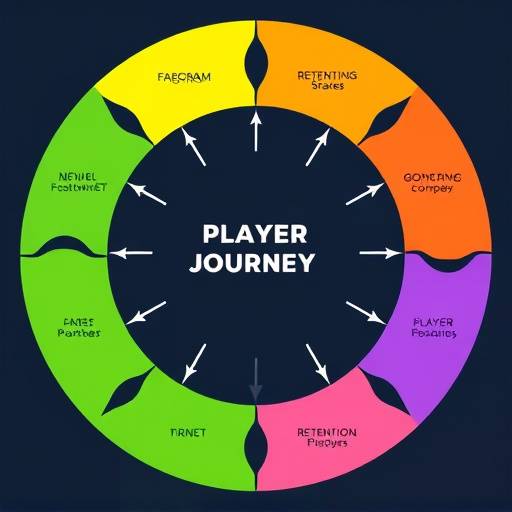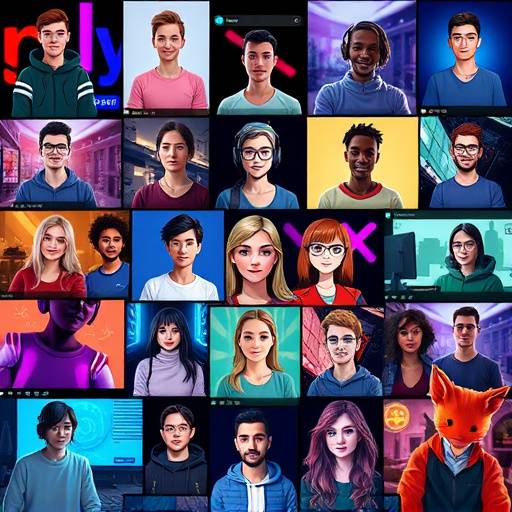The Art of Keeping Them Hooked: Player Engagement
Delve into the strategies and psychology that transform casual players into devoted fans. Understand how to cultivate lasting engagement in the competitive gaming world.
Connect to Monetization See Future TrendsPlayer Engagement: The Lifeblood of Sustainable Gaming
In the dynamic ecosystem of the gaming attention economy, player engagement is not merely a metric; it is the fundamental pulse that signifies a game's health, longevity, and economic viability. While initial acquisition of players is crucial, it is the sustained, meaningful interaction that truly defines success. NexusPlay Insights is dedicated to dissecting the intricate science and art behind cultivating and maintaining deep player engagement.
The gaming industry thrives on keeping players immersed, invested, and consistently returning to virtual worlds. This requires a sophisticated understanding of human psychology, reward systems, social dynamics, and emergent technologies. Engagement is the bridge that connects a player's initial interest to long-term loyalty, transforming a fleeting interaction into a lasting relationship.
Consider the player journey. It begins with discovery, progresses through onboarding, and ideally, evolves into a phase of deep commitment. Each stage presents unique challenges and opportunities for engagement. The initial excitement of a new game can quickly wane if the onboarding process is confusing or if players don't immediately grasp the core mechanics. Effective engagement strategies ensure that this initial spark is fanned into a steady flame.

At NexusPlay Insights, we explore how game designers leverage psychological hooks to capture and retain player attention. This includes understanding intrinsic motivations such as mastery, autonomy, and purpose, as well as extrinsic motivators like rewards, recognition, and social status. The careful calibration of these elements can create powerful feedback loops that encourage players to spend more time, effort, and emotional investment in a game.
The Pillars of Player Engagement
Several key pillars underpin successful player engagement strategies:
- Compelling Core Gameplay: At its heart, a game must be fun and rewarding to play. This involves intuitive controls, challenging yet achievable obstacles, and satisfying feedback mechanisms for player actions.
- Effective Onboarding and Tutorialization: A smooth introduction to game mechanics is vital. This can range from interactive tutorials to gradual reveals of complexity, ensuring players feel competent and empowered from the start.
- Meaningful Progression Systems: Players are driven by a sense of growth and accomplishment. Well-designed progression systems, whether through leveling up, acquiring new skills, unlocking content, or achieving milestones, provide a continuous sense of purpose.
- Robust Reward Mechanisms: Anticipation and receipt of rewards are powerful engagement drivers. This includes daily login bonuses, achievement unlocks, cosmetic items, and in-game currency that reinforce player investment.
- Social Integration and Community Building: Humans are social creatures. Multiplayer modes, guilds, leaderboards, and in-game chat foster a sense of belonging and create shared experiences that significantly enhance engagement and retention.
- Live-Service Elements and Content Updates: For ongoing engagement, games need to evolve. Regular content updates, seasonal events, challenges, and new storylines keep the experience fresh and provide compelling reasons for players to return.
The economic implications of strong player engagement are profound. Highly engaged players are more likely to make in-game purchases, watch advertisements, and become advocates for the game. This translates directly into increased revenue and a stronger return on investment for developers and publishers. A game with a dedicated and active player base is inherently more valuable and sustainable.

Psychological Hooks and Engagement Loops
Understanding player psychology is paramount. Concepts such as the variable ratio reinforcement schedule , famously observed in slot machines, also play a significant role in games, creating a sense of anticipation and excitement for unpredictable rewards. This, combined with clear goals and feedback, forms powerful engagement loops – cyclical processes where player actions lead to rewards, which in turn encourage further actions.
Dr. Evelyn Reed, a leading behavioral psychologist specializing in digital interactions, states, "The most successful games don't just entertain; they become integral parts of a player's daily routine. This is achieved through a masterful blend of intrinsic satisfaction and carefully orchestrated extrinsic motivators that tap into our innate desires for achievement, connection, and progress."
The rise of live-service games has amplified the importance of continuous engagement. Games like "Fortnite," "World of Warcraft," and "Genshin Impact" have built empires on their ability to keep players engaged over years, not just weeks or months. This is achieved through:
- Seasonal Content and Battle Passes: Offering limited-time events and tiered reward systems that encourage consistent play and spending.
- Dynamic Storytelling: Evolving narratives that keep players invested in the game's world and characters.
- Player-Driven Economies: Allowing players to influence and participate in in-game economies, adding another layer of investment.
- Esports and Competitive Play: Providing a high-stakes, spectator-friendly environment that fosters community and encourages dedication.
Ultimately, fostering genuine player engagement is an ongoing commitment. It requires constant iteration, listening to player feedback, and adapting to evolving player expectations. By focusing on creating deeply satisfying, socially connected, and continuously evolving experiences, game developers can not only capture attention but also cultivate the devoted communities that are the bedrock of the modern gaming industry.
Related Insights

Monetization Models That Work
Discover how successful games balance player experience with profitable revenue streams. Explore F2P, premium, subscription, and hybrid models and their impact on engagement.
Explore Monetization
The Future of Gaming Interaction
Understand how new technologies like VR, AR, and cloud gaming are reshaping player engagement and the entire gaming landscape.
See Future Trends
Designing for Everyone
Learn why accessibility is not just a feature but a fundamental aspect of player engagement and how to implement inclusive design practices.
Focus on Accessibility